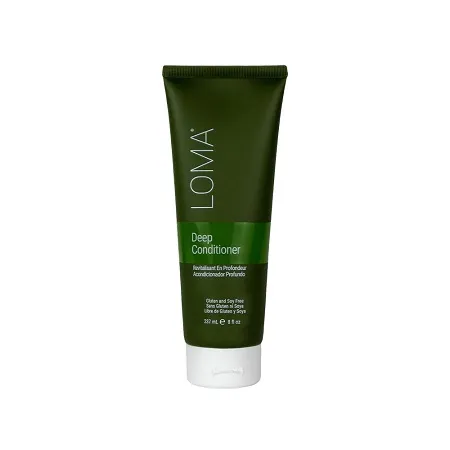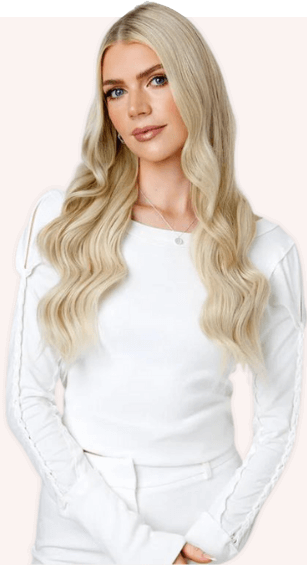Coily hair, with its natural texture and stunning versatility, has long been a source of admiration and curiosity. It possesses a unique charisma that captivates hearts and sparks creativity, yet many struggle to fully comprehend its intricacies. But fear not! We are here to demystify and celebrate the wonder of coily hair, unlocking its secrets and empowering you to embark on a transformative hair care and styling experience. Welcome, dear readers, to the ultimate guide for understanding and embracing the enchanting world of coily hair.
I. What Is Coily Hair?
Coily hair is characterized by tight, spring-like coils and is commonly known as “type 4” hair based on the hair typing system. This system categorizes hair textures according to the diameter of the hair strands and the tightness of the curl pattern. Hair with a coily texture can be classified into three subtypes, namely 4a, 4b, and 4c. Type 4a hair has well-defined, tight curls that are shaped like an S and bounce back easily. Type 4b hair, on the other hand, has less defined Z-shaped curls that are tightly coiled compared to 4a hair. Lastly, type 4c hair has tightly coiled curls that form a zigzag pattern and are susceptible to shrinkage.


This type of hair often has a high density, meaning there are many hair strands per square inch of the scalp. Coily hair can range from fine and delicate to coarse and thick, and it may have various textures and curl patterns within the same head of hair. Despite the challenges, coily hair is incredibly versatile and can be styled in a multitude of ways. From afros and twist-outs to braids and updos, the styling options for coily hair are endless, allowing individuals to express their creativity and embrace their natural beauty.
Read Now: How To Determine Your Hair Type?
II. How To Care For And Maintain Coily Hair?
Caring for and maintaining coily hair requires a combination of proper cleansing, moisturizing, protective styling, and gentle handling. Looking after coily hair demands some distinct approaches that cater to its specific requirements. Utilizing the following tips and tricks will assist you in maintaining the health and shine of your coily hair:
1. Gentle Cleansing:

When it comes to coily hair, using shampoo too often can lead to dryness and breakage due to the stripping of natural oils. Avoid using harsh shampoos that can strip the natural oils from your hair. Opt for sulfate-free shampoos or moisturizing shampoos that cleanse without causing excessive dryness. A gentler and more moisturizing option is co-washing co-washing (using conditioner to cleanse) in between shampoo sessions to retain moisture.
2. Moisturize Regularly:
Coily hair tends to be naturally dry due to its structure, so it’s crucial to provide regular moisture and hydration. To maintain the health of your coily hair and be free of breakage, it is crucial to keep it well-moisturized. This can be achieved by using a moisturizing shampoo and conditioner, and following up with a leave-in conditioner or hair oil to seal in moisture. Additionally, you can give your hair an extra boost of hydration by using a deep conditioner or hair mask once a week.

Additionally, incorporate deep conditioning treatments into your hair care routine. These treatments provide intense hydration and nourishment to your coily hair. Look for deep conditioners that contain moisturizing ingredients like shea butter, coconut oil, or aloe vera. Use a plastic cap or sit under a hooded dryer to allow the conditioner to penetrate deeply.
3. Avoid Heat Damage
Excessive use of heat styling tools can lead to heat damage and weaken coily hair. It’s essential to steer clear of heat styling If you have coily hair, as it can lead to hair damage and make your hair appear dry and brittle. Whenever possible, embrace heat-free styling methods such as twist-outs, braid-outs, or roller sets. In case you need to use heat, make sure to apply a heat protectant spray and set the tools to a lower temperature on your styling tools.
4. Protect Your Hair While You Sleep

Ensuring the health of your hair is crucial, particularly at night. To avoid breakage and maintain moisture, it is recommended to use a silk or satin bonnet or pillowcase. These materials help to retain moisture and reduce friction, preventing breakage and frizz.
5. Trimming and Detangling
Keeping healthy coily hair requires regular trimming and detangling:
- Detangle your coily hair gently to minimize breakage. Start by using your fingers or a wide-tooth comb to remove any knots or tangles while the hair is damp and coated with conditioner. Divide your hair into sections to make the process easier and less damaging.
- Regular trims are essential to maintain the health of your coily hair. Trimming removes split ends and prevents them from traveling up the hair shaft. Aim to trim your hair every 2-3 months or as needed.
III. Tips For Styling Coily Hair
Styling your coily hair can look so effortless, but it can be incredibly difficult. Styling allows you to embrace its natural texture and express your creativity. The trick is to be patient with your hair and be mindful of how much damage you inflict on your strands. Here are some tips to help you achieve beautiful styles:
1. Start with Moisturized Hair:
Before styling, ensure your hair is properly moisturized. Apply a leave-in conditioner or a moisturizing cream to hydrate and soften your hair. This will make it more manageable and easier to style.
2. Finger Detangling:
Coily hair is prone to tangling, so it’s best to detangle it with your fingers or a wide-tooth comb. Start from the end and work your way up, being gentle to minimize breakage. Detangling while your hair is wet or damp with a conditioner or a detangling spray can make the process smoother.
3. Protective Styles:
Protective styles not only help protect your coily lock but also offer versatility and reduced manipulation. Consider styles like braids, twists, buns, or updos. They can last for days or weeks, allowing your hair to rest and grow while showcasing your unique style.
a. Twist-Outs and Braid-Outs:


Twist-outs and braid-outs are popular styles that enhance the natural curl pattern. After moisturizing your hair, divide it into sections and twist or braid each section. Leave them in overnight or until dry, then unravel the twists or braids for beautiful, defined curls.
b. Wash-and-Go Hairstyle

Are you looking for a low-maintenance styling option? Try the wash-and-go hairstyle! The wash and go method is a simple and time-efficient styling option for coily hair. After washing and conditioning your hair, apply a leave-in conditioner and a styling gel or cream. Allow your hair to air dry or use a diffuser to enhance your natural curl pattern. This method can help create a beautiful, natural-looking curl pattern.
c. Headwraps and Scarves:
Headwraps and scarves are fashionable accessories that can elevate your coily hairstyle while providing protection. Experiment with different wrapping techniques and fabrics to create various looks that reflect your personal style. Besides, you can add flair to your hair by incorporating accessories like hairpins, hairbands, bows, or flowers. They can instantly transform a simple style into a stunning statement, allowing you to express your creativity and individuality.

IV. Wrapping Up
Coily hair is tightly coiled and has a high density, making it prone to dryness, breakage, and tangling. Taking care of them requires specialized attention due to its distinctive features. This article aims to assist you in comprehending coily hair, recognizing its characteristics, and offering suggestions to ensure the health and beauty of your coily locks.
Thank you for reading our blog! We hope you enjoyed this article – if you liked what you’ve read, share this with your friends and follow us on our Social Media channels to keep up with the latest trends, tips, guides, and more!


 BEST SELLING PRODUCTS
BEST SELLING PRODUCTS Wig Hair
Wig Hair WHOLESALE
WHOLESALE Contact us
Contact us Sale Events
Sale Events
